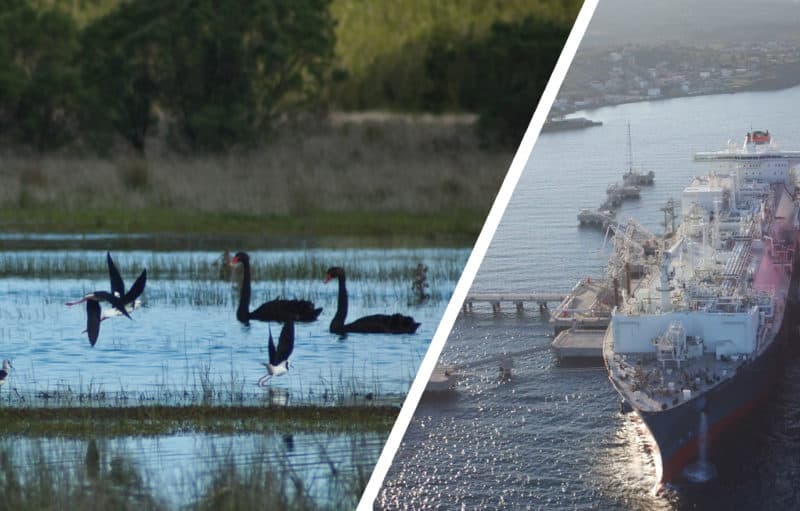PARK WATCH September 2020 |
Victoria’s go-it-alone approach to Traditional Owner Recognition and Settlement Agreements has made joint management of our national parks the ‘new normal’, says Phil Ingamells.
Settlement agreements have now been reached with many Aboriginal communities across Victoria, and they have been engaged in the development of joint management plans for some time.
Among them:
The Yorta Yorta Community, from Victoria’s north, recently produced a strong draft management plan for Barmah National Park that was heavily directed towards the resolution of pressing environmental issues. Environmental weeds and pest animals (including feral horses) at Barmah can now be dealt with vigilantly. Parks Victoria has simultaneously produced, as required under the Ramsar Convention, a plan for Barmah’s extensive Ramsar-listed wetlands. The two plans are in strong agreement, and might, in time, achieve a return to a more natural seasonal flooding regime for the park.
The Gunaikurnai people of Gippsland now jointly manage many parks: The Lakes National Park, Gippsland Lakes Coastal Park, Lake Tyers State Park, Mitchell River National Park, and Tarra Bulga National park among them. While their traditional land takes in a southern section of the Alpine National Park, the settlement agreement doesn’t include joint management there. And while it also takes in part of Snowy River National Park, a joint management arrangement only exists over a small but highly vulnerable, culturally sensitive area.
A similar planning process has taken place with the Dja Dja Wurrung, traditional owners of much of central Victoria. Their Dhelkunya Dja joint management plan takes in Greater Bendigo National Park, Kooyoora State Park, Paddy’s Ranges State Park, Hepburn Regional Park and part of Kara Kara State Park, among others.
How are these agreements reached?
Following the High Court of Australia’s 1992 Mabo decision allowing the granting of Native Title over Crown Land, it became clear to the Victorian government that it might take 50 years to resolve all claims through the difficult and costly process set up within the High Court.
With the agreement of the Commonwealth, the Victorian government set about creating its own process, resulting in the Traditional Owner Settlement (TOS) Act 2010. The TOS Act allows a Traditional Owner Settlement Agreement to be reached by negotiation, and can include:
- A Recognition and Settlement Agreement, giving certain rights over Crown land.
- A Land Agreement, which allows joint management of public land, including national parks.
- A Land Use Agreement: a simplified process to allow for the performance of certain cultural activities.
- A Funding Agreement, providing sustainable funding to allow Traditional Owner organisations to fulfil their responsibilities.
- A Natural Resource Agreement that allows for the use of natural resources for traditional (non-commercial) purposes.
Importantly, national parks jointly managed between Traditional Owners and the state must still be managed according to the clear conservation objectives of Victoria’s National Parks Act 1975 (and other parks are also to be managed in line with the legislation under which they were proclaimed). Public access to national parks remains unchanged, with the possible exception of vulnerable heritage sites, and occasional temporary limitation of access when Traditional Owners are involved in cultural activities.
So what is changing?
We’ll be seeing more Aboriginal names for parks, and features within them. And we’ll probably find that Victorians become far more familiar with the names of Traditional Owner groups; this is something that’s been largely missing in Victoria’s cultural consciousness.
We might also get a better understanding that Aboriginal cultural sites aren’t just shell middens and scar trees, but include the landscape itself, and the plants and animals that live there.
Funding agreements for Traditional Owners should produce an increase in Aboriginal training and employment in all areas of park management. These funds have already seen the emergence of some strong management plans, and hopefully the capacity to implement them.
Most recently, the Gunaikurnai have followed up their joint management plan for Gippsland parks with a comprehensive draft Camping and Access Strategy for Lake Tyers (traditionally Bung Yarnda) State Park. The draft, which is open for comment until September 20, protects the park’s natural and cultural areas and plans to upgrade camping and boating access while minimising foreshore damage.
Joint management allows an exchange of knowledge
Much has changed since colonial times. The bush has been cleared and remaining areas are often fragmented, weeds and feral animals are rampant, and the climate is rapidly changing.
Added to that are the high levels of physical and cultural dispossession of Aboriginal People in Victoria.
We all have a lot of learning to do. This might be most evident in the case of fire management. Taking a careful look at Indigenous burning practices might be the shake-up our current management of fire needs.
And surely, both Indigenous knowledge and western science have always been founded on learning through careful observation.
The dispossession of Aboriginal people is not just something that happened 200 or more years ago. I once knew an Aboriginal elder who told me he would sometimes take a break and camp along the beach at East Gippsland’s Wingan Inlet, but was told to move on when Croajingolong National Park was proclaimed.
Yet earlier this year, the Gunditjmara people of Victoria’s south-west, after a long campaign, won the difficult-to-achieve recognition on the World Heritage List for the remarkable Tae Rak (Lake Condah) Wetlands, listed now as the Budj Bim Cultural Landscape.
It’s a gift to all Victorians.
There’s no going back on this journey. Hopefully, it’s a new and much better time we’re moving towards.
Did you like reading this article? Want to be kept up to date about this and other nature issues in Victoria? Subscribe to our email updates.
You can also receive our print magazine Park Watch four times a year by becoming a member. Find out more here.
